Ecstasy
And
Abandon
A spotlight on some of the photographers who captured the spirit of the underground dance music scene both in the UK and abroad, elevating it from cult to culture.
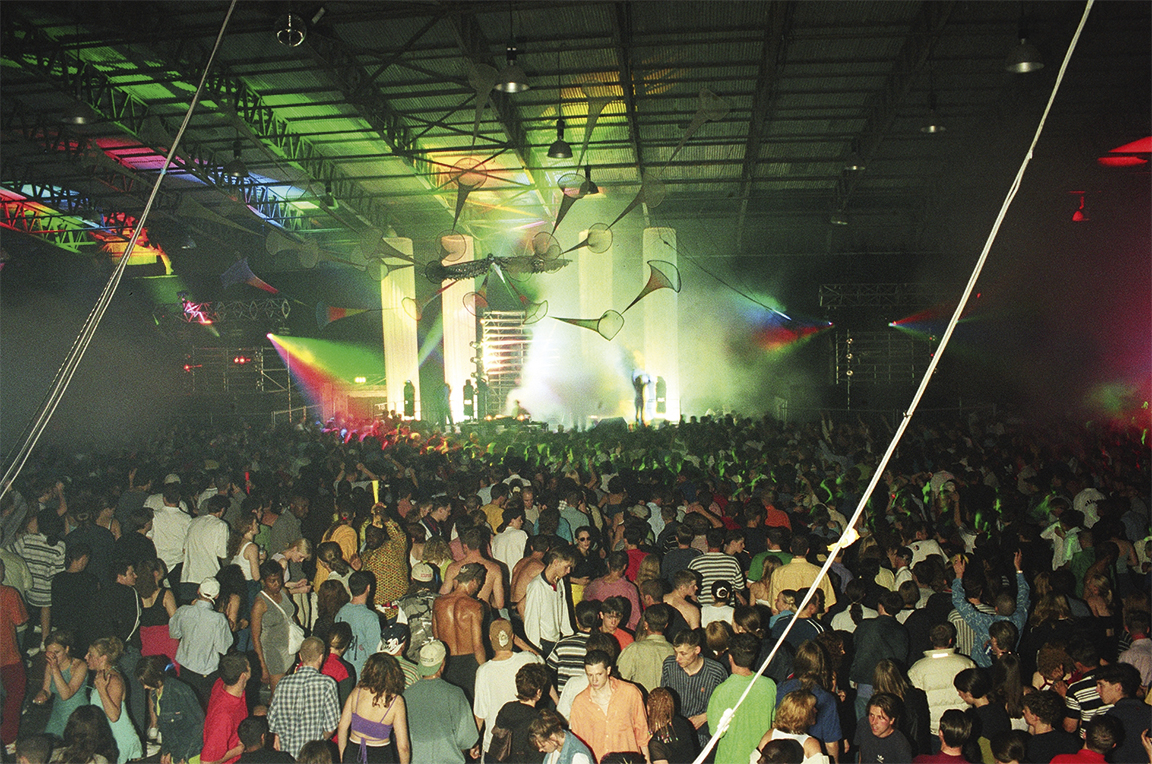
Photo by Skippy, Cult to Culture Archive
Extract from ‘Photographers Who Captured the Ecstasy and Abandon of Rave Culture’ first published on Artsy by Ha Duong, 2018 (link)
In the summer of 1989, amid the sweltering heat of one of the driest summers in the U.K. in three centuries, the countercultural spirit of electronic dance parties, or raves, spread across the nation. That year, then-prime minister Margaret Thatcher celebrated a decade in power as the head of a conservative regime based on privatization and deregulation. Elsewhere, struggles for freedom marked the histories of nations, from the Tiananmen Square protests in China to the Baltic Way created by a human chain of demonstrators across Estonia, Latvia, and Lithuania. In several months, the Berlin Wall would fall.Fed up with an increasingly virulent and conservative government, British youth—clad in oversized T-shirts, wide-legged JNCO pants, and Doc Martens boots—escaped to underground clubs; decrepit, abandoned buildings; and wide-open fields of grass to dance until dawn.
Though the term “rave” had been coined 30 years earlier in London to describe raunchy beatnik parties, rave culture truly emerged with the spread of the British acid house scene during what would eventually be called the “Second Summer of Love” in 1988 and 1989. British raves of that period took cues from Detroit techno, Chicago house, queer nightlife, and the hippie ethos of Ibiza, all of which were thriving.
Confronted with a world they had no control over, ravers saw the parties as a means of freedom and self-possession. “Young people were turning their backs on the rat race and throwing themselves into a hedonistic rush of new music and new drugs,” reported the BBC in its 2006 documentary The Summer of Rave, 1989.
Confronted with a world they had no control over, ravers saw the parties as a means of freedom and self-possession. “Young people were turning their backs on the rat race and throwing themselves into a hedonistic rush of new music and new drugs,” reported the BBC in its 2006 documentary The Summer of Rave, 1989.
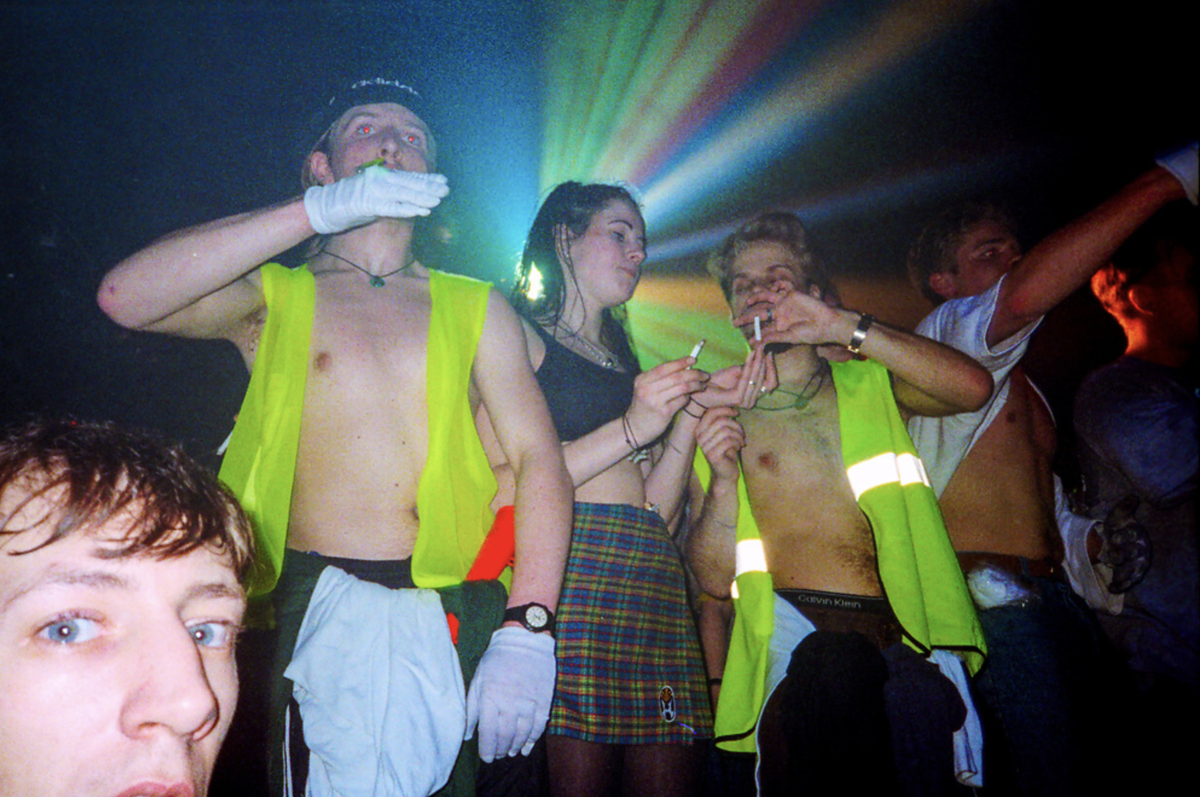
Photo by Matthew Smith, Labyrinth Dalston, London, 1994.
Matthew Smith (UK)
In the U.K., the Housing Act 1980—a defining policy of Thatcherism—allowed council tenants to purchase their homes at a discount. Though seemingly benign, the “right-to-buy” policy produced a severe housing shortage for lower-income, marginalized communities, while prices boomed. As a result, the free festival scene in the U.K., which had begun in the 1960s and ’70s, saw a rapid expansion of people choosing to live on the road year-round to avoid the mortgage trap.
“Then, of course, rave happened,” photographer Matthew Smith explained in an interview with Good Trouble. Soundtracked by Chicago house (Lil Louis, Jesse Saunders), techno (Joey Beltram, Kevin Saunderson), and home-grown British artists (A Guy Called Gerald, 808 State), British rave culture brought acid house and dance music at large to the world stage.
“Then, of course, rave happened,” photographer Matthew Smith explained in an interview with Good Trouble. Soundtracked by Chicago house (Lil Louis, Jesse Saunders), techno (Joey Beltram, Kevin Saunderson), and home-grown British artists (A Guy Called Gerald, 808 State), British rave culture brought acid house and dance music at large to the world stage.
However, in this mood of political dissent—coupled with the introduction of Community Charge (1990), which disproportionately affected the poor, and the Criminal Justice and Public Order Act (1994), which criminalized rave culture—riots and protests broke out across the nation. Smith’s photographs in his book Exist to Resist capture the linkages between these youth cultures—between raves and resistance—and how, he explained, “people found camaraderie, community, fun, and an outlet to counter a feeling of oppression in rave culture.”
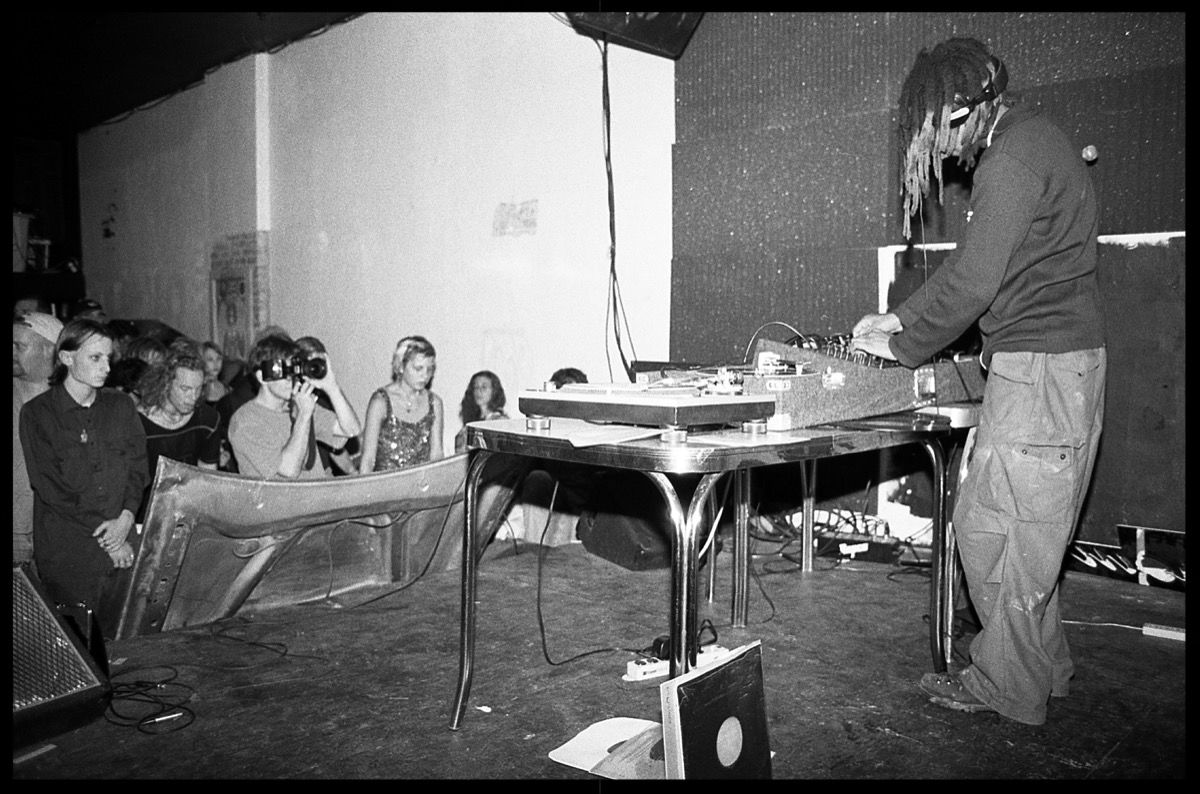 Aaron Mertes, Untitled, from the series “Detroit in the 90s.”
Aaron Mertes, Untitled, from the series “Detroit in the 90s.”
Aaron Mertes (Detroit)
Growing up in a small town on the west side of Detroit in the 1970s and ’80s, photographer and musician Aaron Mertes frequently tuned into a show hosted by radio personality Electrifying Mojo. According to Mertes, as well as famed Detroit DJs Carl Craig and Juan Atkins, Electrifying Mojo introduced Detroit to an eclectic range of music—from Kraftwerk to Prince—and, in doing so, made the Detroit techno scene possible.
As techno spread through the airwaves, Mertes would visit local record stores where he and other music aficionados received rave flyers that simply listed a phone number or displayed a map. Sometimes, a phone call would lead straight to directions to the party venue; other times, it would direct Mertes to a tedious series of steps—from multiple phone calls and locations—just to find out where the parties were. The secrecy of these illegal raves was essential to avoid being shut down by the police: Raves were typically held in abandoned buildings—the Bankle Building, the Packard Automotive Plant, and train stations—as well as black and gay clubs, secret basements, and private homes.
As techno spread through the airwaves, Mertes would visit local record stores where he and other music aficionados received rave flyers that simply listed a phone number or displayed a map. Sometimes, a phone call would lead straight to directions to the party venue; other times, it would direct Mertes to a tedious series of steps—from multiple phone calls and locations—just to find out where the parties were. The secrecy of these illegal raves was essential to avoid being shut down by the police: Raves were typically held in abandoned buildings—the Bankle Building, the Packard Automotive Plant, and train stations—as well as black and gay clubs, secret basements, and private homes.
In a racially tense city, raves allowed people of diverse backgrounds to connect through music. “There was such a clash of cultures, but there was respect on both sides,” Mertes told Artsy.
It was Detroit’s specific, insular conditions, Mertes explained, that allowed the techno scene to thrive. “Detroit was just a blank slate.…[It] gave you free reign to do what you wanted,” Mertes said. “That was the beauty of it.…As an artist, as a photographer, it was a major playground.”
It was Detroit’s specific, insular conditions, Mertes explained, that allowed the techno scene to thrive. “Detroit was just a blank slate.…[It] gave you free reign to do what you wanted,” Mertes said. “That was the beauty of it.…As an artist, as a photographer, it was a major playground.”
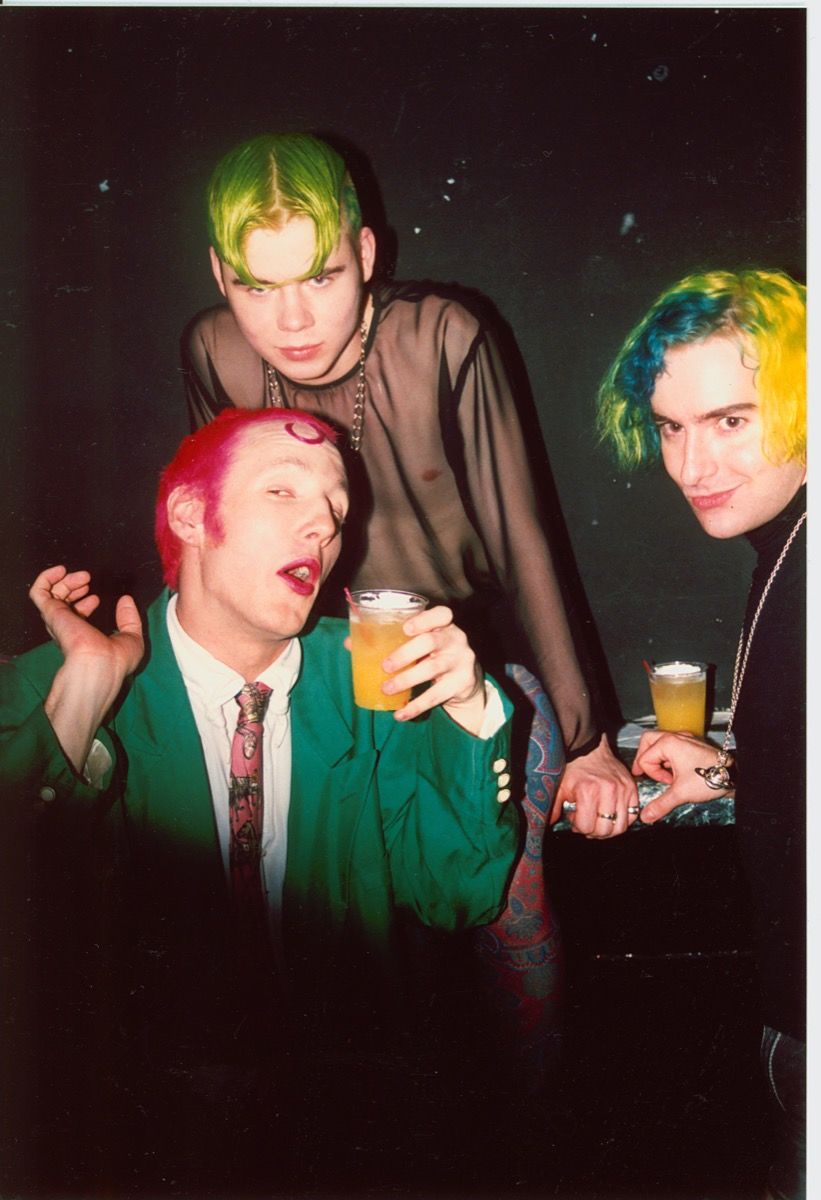 Photos by Alexis Dibiasio.
Photos by Alexis Dibiasio.

Alexis Dibiasio (New York)
In the late 1980s and early ’90s, the famed New York club kids wore fashion that aimed “to provoke outrage or hog attention,” wrote club kid Ernie Glam in Alexis Dibiasio’s book Fabulosity: A night you’ll never forget…or remember! “They took inspiration from clowns, drag, bondage, sci-fi, horror, punk, Parisian couture and children’s wear.…Eventually the look became a stereotype.” Gender-fluid and DIY, the iconic club kid scene jump-started the career of drag icon RuPaul and elevated club culture to an environment in which one could openly craft their self-image in a conservative America.
Mostly taken between 1989 and 1993 in New York, Dibiasio’s photographs in Fabulosity fully capture the extravagance and hedonism of drag queens and club kids. Dibiasio, though not a club kid, would attend and photograph the parties every week for years. Despite the energy and vitality reflected in his images, these nightclubs were never “utopian spaces, or spaces where everyone is equal,” Glam told i-D in 2017.
Mostly taken between 1989 and 1993 in New York, Dibiasio’s photographs in Fabulosity fully capture the extravagance and hedonism of drag queens and club kids. Dibiasio, though not a club kid, would attend and photograph the parties every week for years. Despite the energy and vitality reflected in his images, these nightclubs were never “utopian spaces, or spaces where everyone is equal,” Glam told i-D in 2017.
“There was always a hierarchy and a pecking order, just like in regular society.”
During this booming era of nightlife, New York City’s municipal government revived the antiquated Cabaret Law—later repealed by Mayor Bill de Blasio in 2017—making it illegal to host dancing without a license, and, therefore, easy to legally police and shut down dance clubs. The law, which could be enforced or ignored at will, was largely perceived as homophobic and racist, and was at odds with what many night revelers had gone to clubs to escape. “We all come to a nightclub with our baggage,” explained Glam, “and a lot of our baggage is from the dystopia outside.”
During this booming era of nightlife, New York City’s municipal government revived the antiquated Cabaret Law—later repealed by Mayor Bill de Blasio in 2017—making it illegal to host dancing without a license, and, therefore, easy to legally police and shut down dance clubs. The law, which could be enforced or ignored at will, was largely perceived as homophobic and racist, and was at odds with what many night revelers had gone to clubs to escape. “We all come to a nightclub with our baggage,” explained Glam, “and a lot of our baggage is from the dystopia outside.”
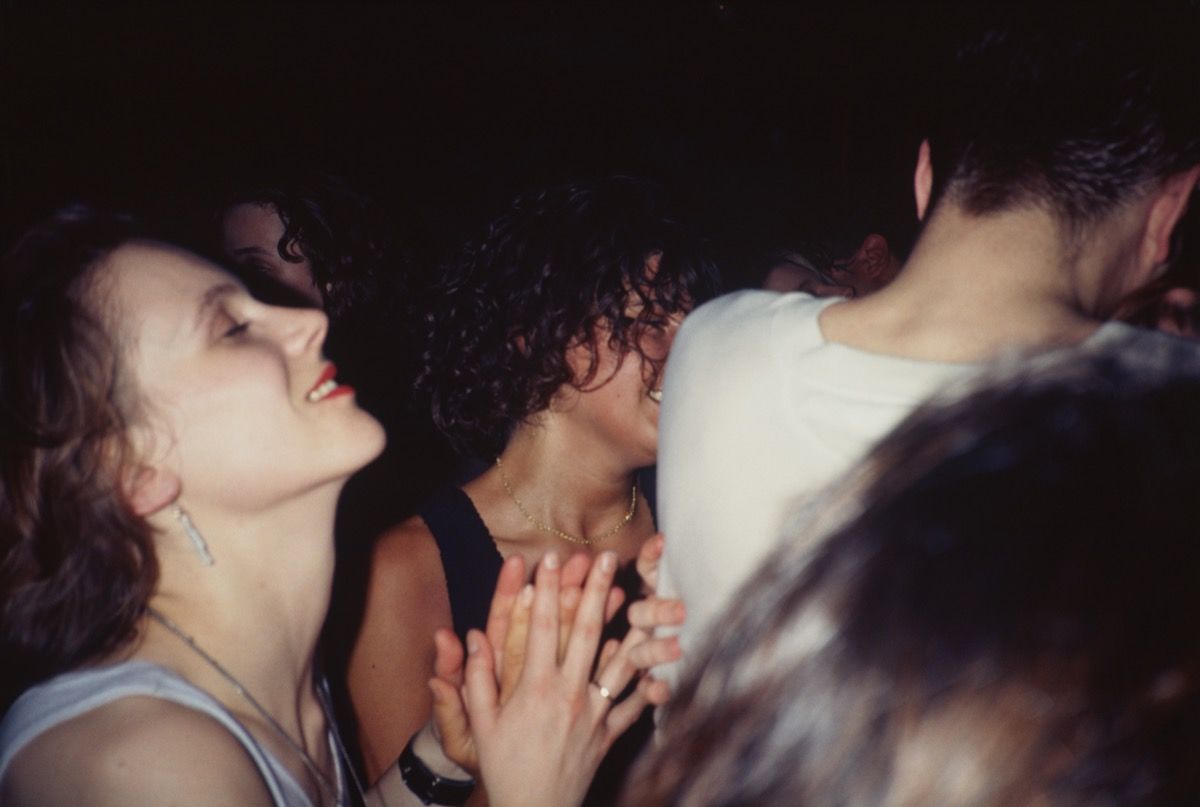 Wolfgang Tillmans, Love (hands praying), 1989.
Wolfgang Tillmans, Love (hands praying), 1989.Wolfgang Tillmans
At the age of 19, Wolfgang Tillmans left his provincial German hometown for Hamburg. It was 1987, and post-war Germany remained weary. As the Cold War reared its end, the world experienced an unprecedented questioning of western values. Growing up during uncertain times, combined with the experience of being gay in a still-conservative environment, led Tillmans to embrace the world he found in Hamburg, where youth danced their nights away to acid house. “Being ‘in the body,’ being comfortable in one’s body, sharing friendship—those things seemed very liberating to me,” he told the Brooklyn Rail in an interview from 2016.
Tillmans quickly became a part of the city’s youth and club culture, where his political ideas of democratic community manifested. In himself and his contemporaries, Tillmans saw a singular spirit that eschewed the hierarchies of the past and seriously considered hedonism—the right to party, take up space, and control one’s body and identity—to be a political issue.
Tillmans quickly became a part of the city’s youth and club culture, where his political ideas of democratic community manifested. In himself and his contemporaries, Tillmans saw a singular spirit that eschewed the hierarchies of the past and seriously considered hedonism—the right to party, take up space, and control one’s body and identity—to be a political issue.
To capture this energy, he turned to photography. “A lot of the early work was motivated by an interest to keep activism as attractive as clubbing, and even to connect the two,” Tillmans explained further in the interview. “I did not see hedonism and activism as exclusive sites. Only when you are aware of how tragic life can be can you also enjoy the depth of a party through the night.”
Amid this mood, the Berlin Wall fell, further opening up German youth to new ways of living. In 1990, Tillmans moved to the U.K. to attend art school in Bournemouth, later relocating to London. There, he continued to capture his friends and the queer rave community, producing images that embodied the raw openness and freedom young people experienced in those nights. His intimate photographs led to commissions in fashion magazines, and soon propelled him to international fame.
Amid this mood, the Berlin Wall fell, further opening up German youth to new ways of living. In 1990, Tillmans moved to the U.K. to attend art school in Bournemouth, later relocating to London. There, he continued to capture his friends and the queer rave community, producing images that embodied the raw openness and freedom young people experienced in those nights. His intimate photographs led to commissions in fashion magazines, and soon propelled him to international fame.
Rineke Dijkstra, The Buzz Club, Liverpool, Mystery World, Zaandam, NL 1996-1997.
Rineke Dijkstra (UK)
In 1996, Rineke Dijkstra walked into The Buzz Club in Liverpool, and was shocked by what she saw: a queue of primarily 15-year-old girls, and a space where it “was all about the girls who were in charge,” she told i-D. Known for her portraits of people in states of transition, Dijkstra set up a makeshift studio at the back of the club to capture these adolescent girls. The subjects, exposed as they confront the camera alone, were prompted to “do something.” Responding to that vague directive, as well as the throbbing background noise and the occasional voice of a DJ, these young women stand, dance, smoke, and drink, self-consciously avoiding the camera. In one portrait, a couple makes out passionately; in another, a girl in white locks eyes with the camera and dances her heart out.
In the second half of Dijkstra’s video, Dutch hardcore techno fans known as “gabbers” emerge from the Zaandam club Mystery World in baggy, gender-neutral tracksuits. Like the subjects from The Buzz Club, the Mystery World partiers remain despondent and unmoved until the music picks up; unlike the young girls, their reactions to the beat are severe.
For Dijkstra, “a portrait is a carrier of emotions, ideas, and circumstances,” and can “capture subjects in a specific state of being,” as she explained in her interview with i-D. Set between a white wall and the lens of the voyeur, the deep vulnerability of Dijkstra’s subjects reveals how these adolescents choose to craft their identities through the rituals of their specific communities.
For Dijkstra, “a portrait is a carrier of emotions, ideas, and circumstances,” and can “capture subjects in a specific state of being,” as she explained in her interview with i-D. Set between a white wall and the lens of the voyeur, the deep vulnerability of Dijkstra’s subjects reveals how these adolescents choose to craft their identities through the rituals of their specific communities.